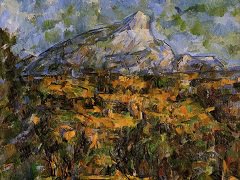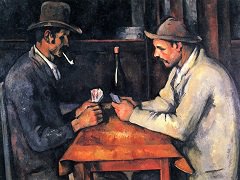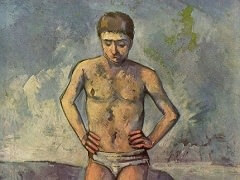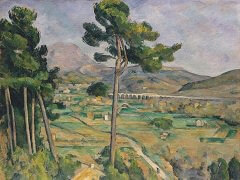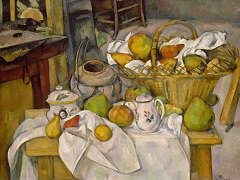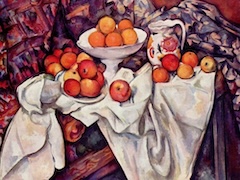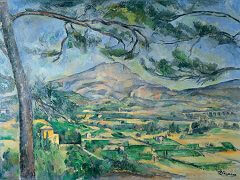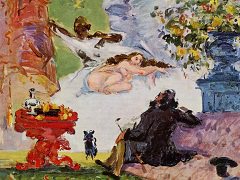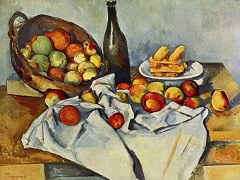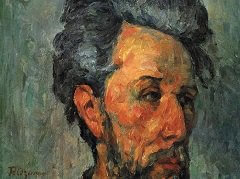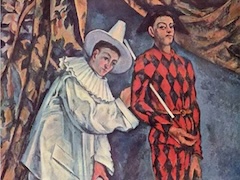Portrait of Gustave Geffroy, 1895 by Paul Cezanne
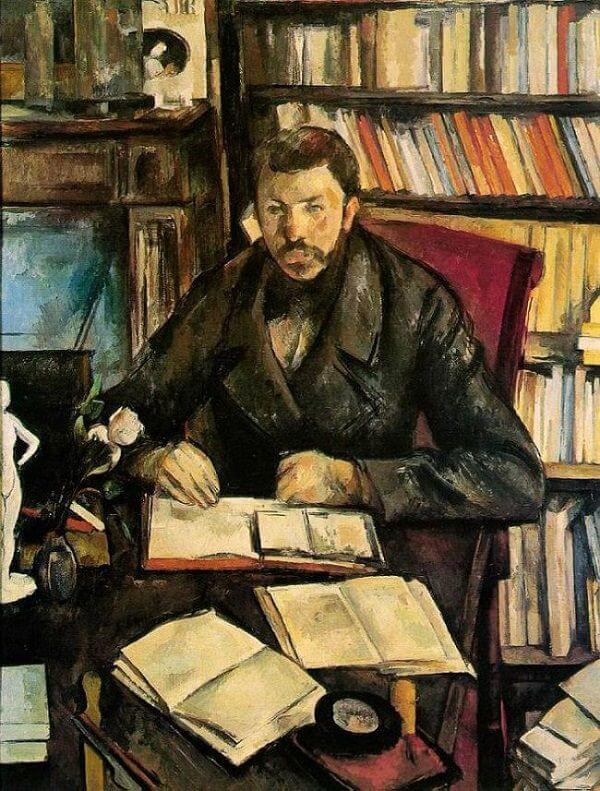
Gustave Geffroy, a French novelist and art critic noted as one of the earliest historians of Impressionism. In March 1894 , Geffroy wrote a sympathetic article in the periodical Le Journal praising the work of painter Paul Cézanne, who until then had received little praise in critical circles. Mutual friend Claude Monet arranged for a meeting between the two in November of that year, which ended abruptly due to Cézanne's oft-noted erratic behavior. Nonetheless, Geffroy continued to write favorably of Cézanne, believing "He is a great teller of truth. Passionate and candid, silent and subtle, he will go to The portrait, so intricate in conception, was done over a period of three months in Geffroy's library. Cezanne despaired of finishing it, although it seems complete enough, a triumph of composition.
It is not a revealing study of the face, but an image of the man of books, the writer among his things. Cezanne often reduces the singularity of human beings; he is most happy with people like his The Card Players, who do not impose themselves, who are perfectly passive or reserved, or immersed in their tasks. The portrait becomes a gigantic still life. The world of objects absorbs the man and lessens the intensity of his person; but it also enlarges him through the rich and multiple surroundings. His repressed activity is transferred to the complicated articulation of his books, the instruments of his profession. Indeed the arrangement of the books behind him, projecting and receding, tilted differently from shelf to shelf and ending in the open volumes below, seems more human than the man, reminding us of a long twisted body in classic counterpoise, like Michelangelo's Slave in the Louvre, a work that Cezanne admired and drew.
The man, by contrast, is fixed symmetrically with arms spread and bent - an immovable pyramid. The chair and table between which he is barricaded are another complex of tilted forms abstrusely counter-posed to the wall of books and united to these by common tones, and by surprising correspondences of line. The open books lying on the table and the closed books standing on the shelves, all converging to Geffroy's head, belong to a common structure of balanced directions, although one group owes its tiltings to gravity and the other mainly to perspective. The different accents of orange in the bookcase and on the table confirm the contrast of the vertical and horizontal planes. With what care Cezanne studied the parts we can see in the warm strokes on the brow parallel to the slanting orange book nearby, with white and violet strokes between them, and in the slanting light spot at the right shoulder.
The painting is a rare union of the realistic vision of a piece of space, seen directly in all its accidents and richness of detail, with a powerful, probing, rigorous effort to adjust all that is seen in a coherent balanced structure with its own vitality and attraction. The whole looks intensely contrived and intensely natural. We pass often from the artifice of composed forms to the chaos of a crowded room, and from the latter we are soon brought back to the imposing order invented by the artist; the oscillation is permanent. No line is simply a device of design; it has always the quiver of existence in light and is a product of Cezanne's robust, sensitive touch. The straightest and most irregular lines are sensitive alike and are equally parts of the whole in its double aspect of image and painting-fabric. If the little feminine statuette softens the severity of the books, it is also in its axis and bent arm a counterpart of the rigidity of the man; the tulip in the blue vase is inclined with his arm; and his delicately painted, living right hand recalls the distant books above.


